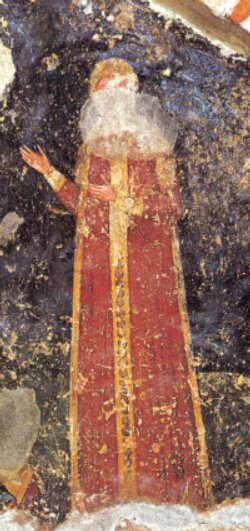Mouse Castle [Pondikókastro] was built by the Venetians on a peninsula at the sea's edge, and would be a prosperous castle, except that in the year 906 [1500], it was conquered by Sultan Beyazid the Saintly, and he is supposed to have left it in ruins after the conquest so that no gathering of infidels might raise an insurrection there. But according to a sound tradition the reason for the ruin is this:
Inside this great city there was a magic charm in the shape of a golden mouse, fashioned by one of the ancient sages and placed on a high column. While the charm existed, there were no mice in the city, but at the time of the conquest, Muslim booty-hunters pulled down the column, tore off the golden mouse that was on it, and took it away. As soon as they did so, the entire city was taken over by mice, and not only could the people there not save their clothes and provisions, but the warrior's horses were all nibbled down into colts by the mice, which ate up their manes and tails, and all the weak old men, long in the tooth, had their hair, beards and mustaches eaten off and were turned into young lads by the mice.
Terrified by the mice, therefore, the entire populace abandoned the city and ran away, so that the whole place fell into ruin. There are still mice as big as cats in the orchards of the city but there is no trace of any of Adam's sons.
Thus it is written . . .
From Evliya's Travels in the Morea © Pierre A. MacKay..
Thus it is written . . .
From Evliya's Travels in the Morea © Pierre A. MacKay..





